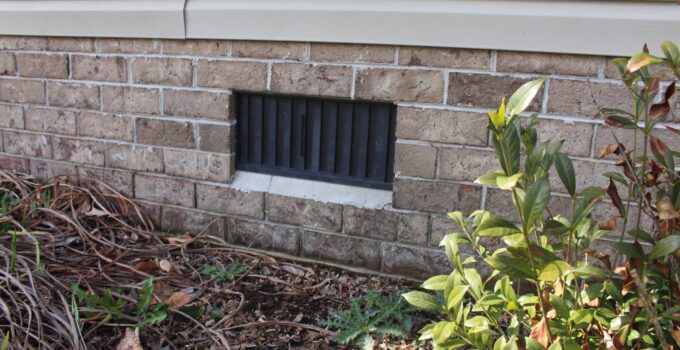Did you realize that termites and flames collectively damage more wood than mold each year? Even though mold is a sluggish assassin, more raw substances fall prey to it. Humidity is the primary factor in both interior and exterior mold growth. You may know how challenging it is to keep damp out if your home’s basement includes a crawl area region.
You run the danger of causing irreparable house destruction and creating a hazardous atmosphere in your house if mold invades your crawl space. You can reduce the danger by improving the airflow in your crawl area.
You’ve probably questioned what all these screened punch-out apertures on the side of home base walls were for before. The effective operation of your home depends on these vents for the crawl ventilation. Your home’s long-term upkeep and safety depend on how effectively your crawl area is aired. Find more about Crawl Space Vents here!
Page Contents
What Is the Process of Crawl Space Ventilation?
It would be best if you comprehend the mechanism of crawl space ventilation to maximize it. The area between the bottom of construction and the surface is referred to as a crawl place in a residence.
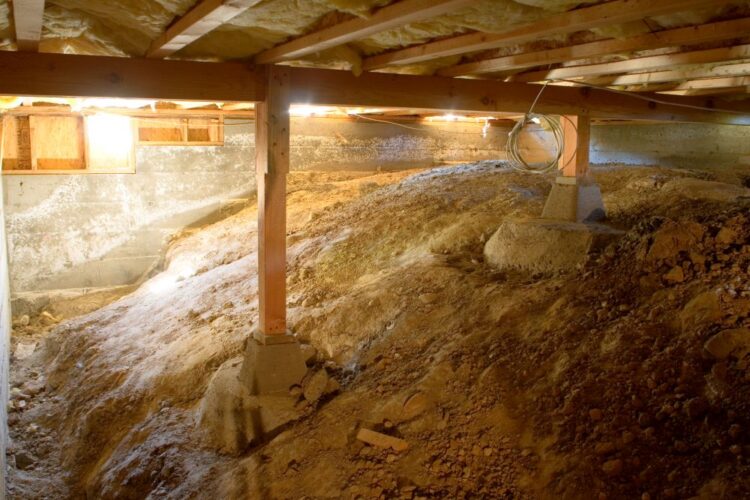
Source: hunker.com
A crawl area kind of base is typical in hot, humid locations where it is preferable to lift the building just a little bit off the surface to prevent humidity. When a part of the house—like a porch—is detached from the main building and has a distinct foundation, crawl spaces are occasionally discovered alongside basement foundations.
Humidity is the factor that damages houses the most. Wood rot and several types of mold and mildew are just a few of the issues that moisture may cause in a house. A house can quickly collapse if dampness is left unchecked.
The most effective defenses versus dampness in a crawl space are light, warmth, and airflow. The greatest answer for a crawl space is to encourage optimum ventilation because it is tough to heat and light a crawl room.
Building rules have traditionally mandated that subterranean
areas be adequately ventilated so that sufficient airflow can assist keep these spaces dry to prevent damage from moisture that may rot away beams, and joists, including floorboards. The crawl space encircling solid concrete substructure typically has many rectangular screening vents to facilitate this airflow.
Requirements of the International Residential Code (IRC)
In the International Residential Code, nearly all code standards for all areas of house development are listed (IRC). The guidelines outlined in the IRC serve as the foundation for all code standards for domestic property, except state and local regulations take precedence.
R408.1 of the IRC, Ventilation
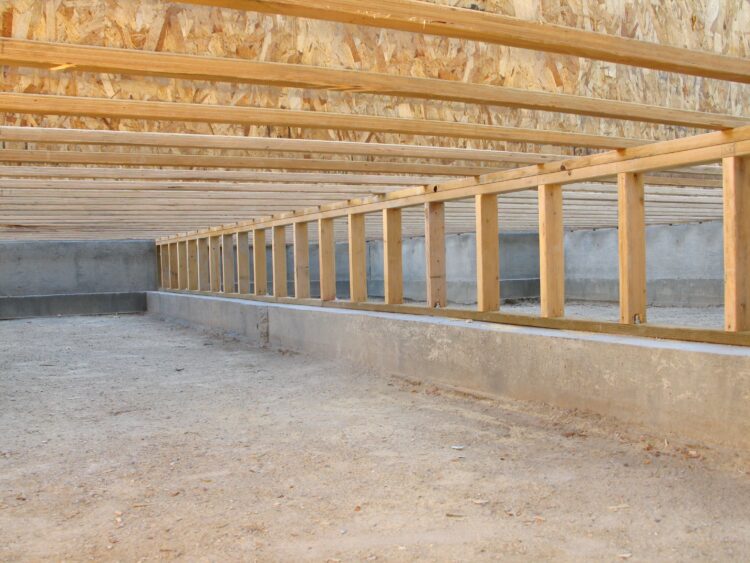
Source: thespruce.com
Section R408 of the IRC has numerous sections that specify the requirements for venting crawl spaces. The basic specification for ventilation crawl areas is outlined in the first paragraph of IRC section 408:
- Every structure must have ventilation apertures in the concrete foundation or outside walls in the subfloor space between the bottom of the floor joists and the ground. Except if the underlying area is coated in Class 1 vapor retarder substance, the small net size of ventilation holes must never be just under 1 square foot for every 150 square feet of under-floor space area. The low net surface of ventilation apertures must be at least 1 square foot for every 1,500 square feet of under-floor space when a Class 1 vapor retarder substance is utilized. Every structure angle must have one of these ventilation apertures within three feet.
This rule regulation can be interpreted to reflect that for every 150 square feet of crawl space area, and you require 1 square foot of screened venting room piercing the outer base.
For instance, you would want vents with a total square footage of 6 square feet if your base is 30 feet by 30 feet. Three 1-foot by 2-foot vents or six 1-foot by 1-foot vents could accomplish this.
Therefore, you require 1 square foot of vent per every 1,500 square feet of area if you encapsulate the exposed floor in your basement with a substance that is authorized as a vapor barrier.
The rule also stipulates that a vented aperture must be close to each structure side. This is required to guarantee decent air cross-flow.
Varieties of Crawl Space Vents, Section 308.2
The following section describes the layout of such crawl space outlets in more depth. The items are acceptable for use in vents, which all should be at least one square foot in size:
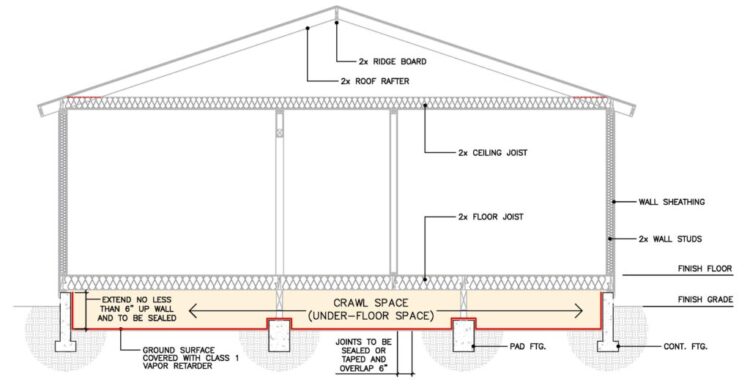
Source: buildingcodetrainer.com
- Expanded sheet metal plates with a minimum thickness of 0.047 inches
- Plates made of perforated sheet metal that are at least 0.070 inches thick
- grate or grill made of cast iron
- Load-bearing brick vents that are extruded
- Hardware cloth made from at least 0.035-inch wire
- Corrosion-resistant wire mesh with a minimum thickness of 1/8″
The vents can have louvers that can be moved if you employ a ground vapor barrier.
Unventilated Crawl Spaces, Section 308
This clause includes provisions for situations where crawl place vents are preferred to be left out by builders and homeowners. Typically, this is done to avoid thermal heat loss or to keep insects and other vermin from entering the crawl area.
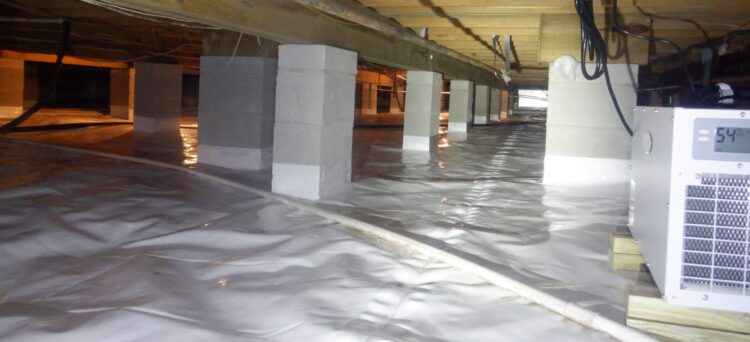
Source: baycrawlspace.com
Contractors may now choose to construct non-vented crawl rooms as long as they adhere to the accompanying guidelines:
- The top-ventilated part of the house should have motorized air circulation installed between it and the crawl space.
- For every 50 square feet of crawl space, the air-circulating system must move at least 1 cubic foot of air.
- A vapor-retarding material must be used to seal the crawl space floor area thoroughly.
- The inner foundation walls must be lapped to the vapor retarder’s edge.
- Different pages that are stacked must overlap by a minimum of 6 inches. Seams need to be sealed.
- Every crawl space wall should be properly sealed with R-values that reflect the local temperature.
Conclusion:
Although it’s crucial to ventilate crawl spaces, many other methods exist for keeping the air dry. The effective approach for your house will rely on the environment and the specifics of your crawl area. Vents can be opened and closed at different times of the year in dry climates. Crawl space sealing, however, continues to be the most widely used technique for reasonable causes. So now, with the types of vents and all the guides above, you know vents are needed in crawl spaces.
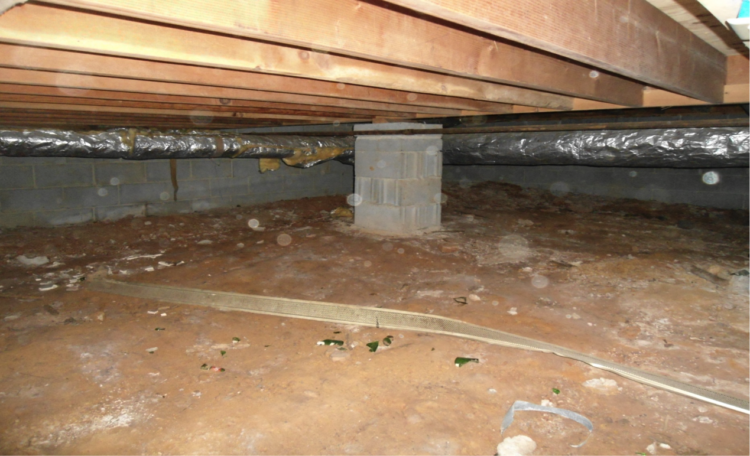
Source: solvitnow.com

